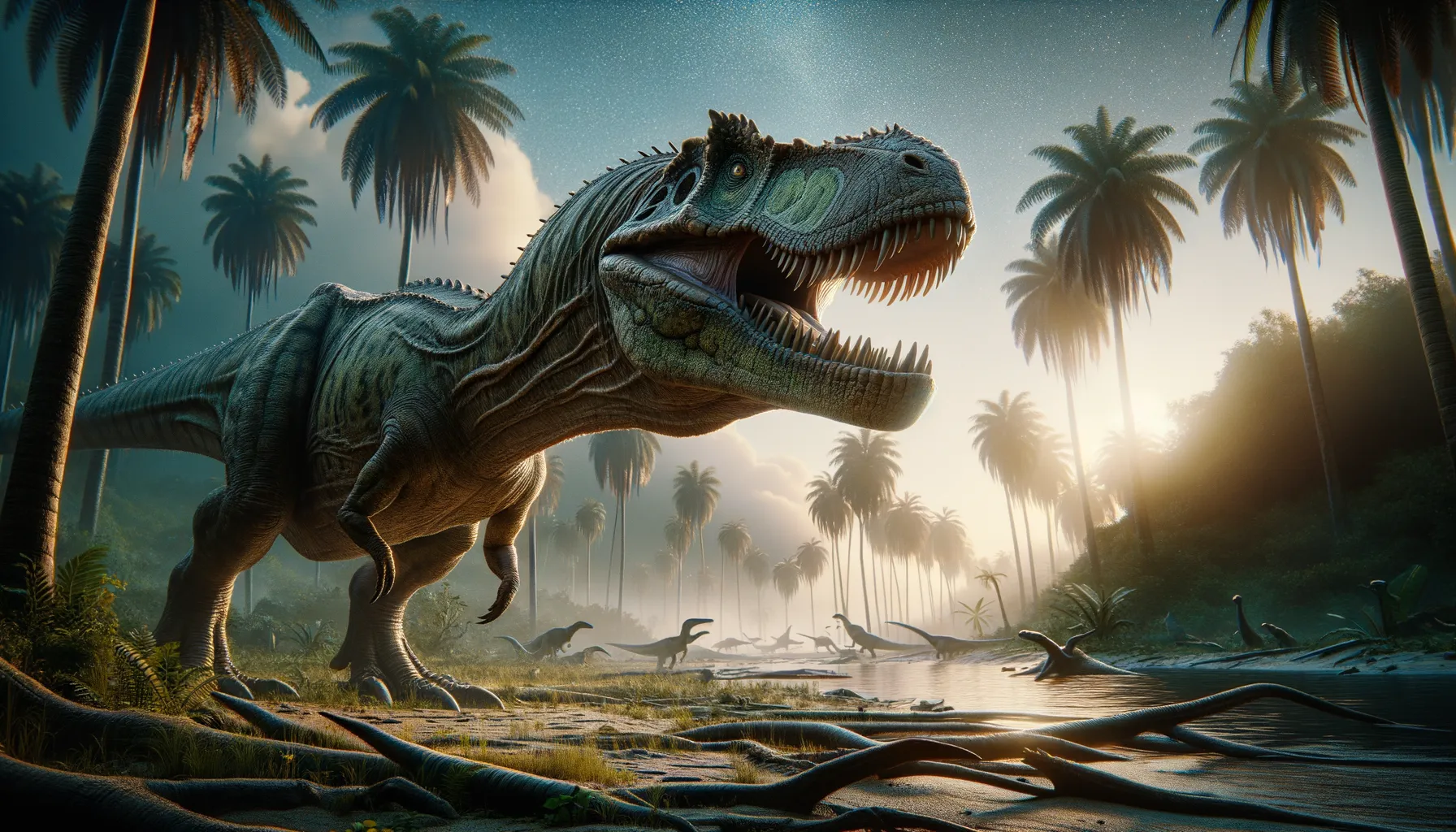
Razanandrongobe
A Jurassic predator with a croc-like bite.
Period
Jurassic
Length
Estimated to be around 7 meters long.
Height
Approximately 3 meters at the hip.
Weight
Estimated to be quite heavy, around 800-1000 kg.
Razanandrongobe, often referred to as the 'giant croc-relative', was a formidable predator during the Jurassic period. Its fossils were primarily found in Madagascar, revealing its crocodilian-like features including sharp teeth and strong limbs. This dinosaur hunted prey using its powerful jaws, showcasing a blend of features observed in both dinosaurs and later crocodiles. The discovery of Razanandrongobe has provided fascinating insights into the diversity of prehistoric life on the island.
Diet
Razanandrongobe was carnivorous, preying on other dinosaurs and possibly large reptiles. Its strong jaws and sharp teeth were perfectly adapted for cutting through flesh, indicating a diet focused on meat.
Hunting
It likely used ambush tactics to capture prey, given its powerful bite force and stealthy approach. As a top predator, it occupied a significant position in its ecosystem, keeping prey populations in check.
Environmental challenges
Living in Madagascar during the Jurassic meant Razanandrongobe faced a variety of challenges, such as competing with other predators for food. The island environment could also mean fluctuations in food availability, as species migrated or populations shifted. Climate conditions would have varied greatly, demanding adaptability to changing weather patterns and water sources.
Speed
Relatively slow-moving.
Lifespan
Lifespan estimates are not clear.
First discovery
Discovered in Madagascar in the early 2000s.
Fun Facts
- Razanandrongobe is one of the largest prehistoric reptiles that lived in the Middle Jurassic period, around 170 million years ago.
- Nicknamed 'Razana', the dinosaur's name means 'ancient lizard ancestor' in Malagasy.
- Razana had massive teeth similar to those of a T. rex, suggesting it was a fierce predator.
- Fossils of Razanandrongobe were discovered in Madagascar, highlighting the island's rich prehistoric biodiversity.
- Unlike many other dinosaur fossils, Razana's remains included part of its skull, offering valuable insights into its dietary habits.
- Razana is considered a distant relative of modern crocodiles, showcasing an interesting evolutionary link.
- The study of Razanandrongobe helps researchers understand the diversity and ecological dynamics of ancient ecosystems.
Growth and Development
Razanandrongobe likely followed growth patterns similar to other large theropods, indicating relatively slow growth rates reaching maturity over several years. Juveniles would have required hiding spots to protect against larger predators while they matured. As it grew, developing its robust musculature and strong skeletal structure was critical to its survival as a top predator.
Habitat
Its habitat in Madagascar during the Jurassic was likely rich with diverse flora and fauna, providing ample hunting grounds. Swamps, rivers, and dense vegetation would have been characteristic of its environment. Such environments supported a wide range of species, from small mammals to other significant dinosaur prey.
Interaction with other species
As a dominant predator, Razanandrongobe would have had little competition, but interactions with rival predators for territory and food were possible. Its presence helped shape the ecosystem, influencing the behavior and evolution of prey species. Symbiotic relationships with certain scavengers might have existed, as these animals fed on leftovers from Razanandrongobe's hunts.
Natural lifespan
The exact natural lifespan of Razanandrongobe is not well-documented.
Reproduction
Reproductive behaviors are largely speculative, but it likely laid eggs like its closest relatives. Nesting sites probably required well-hidden areas to protect from scavengers and environmental threats. Parental care details remain unclear, but guarding behavior is possible to ensure juvenile survival.
Social behaviour
While specific social structures remain unknown, Razanandrongobe likely maintained some solitary tendencies, typical of large predators. Its behavior during mating seasons might have become more social, interacting with potential mates. Territorial instincts would drive interactions with other predators, defending prime hunting areas aggressively.
Fossil locations
Significant fossils of Razanandrongobe have been located in the Mahajanga Basin of Madagascar. These findings have given researchers critical insights into its size and lifestyle. The discovery in Madagascar highlights the unique diversity of the island's prehistoric ecosystem.
